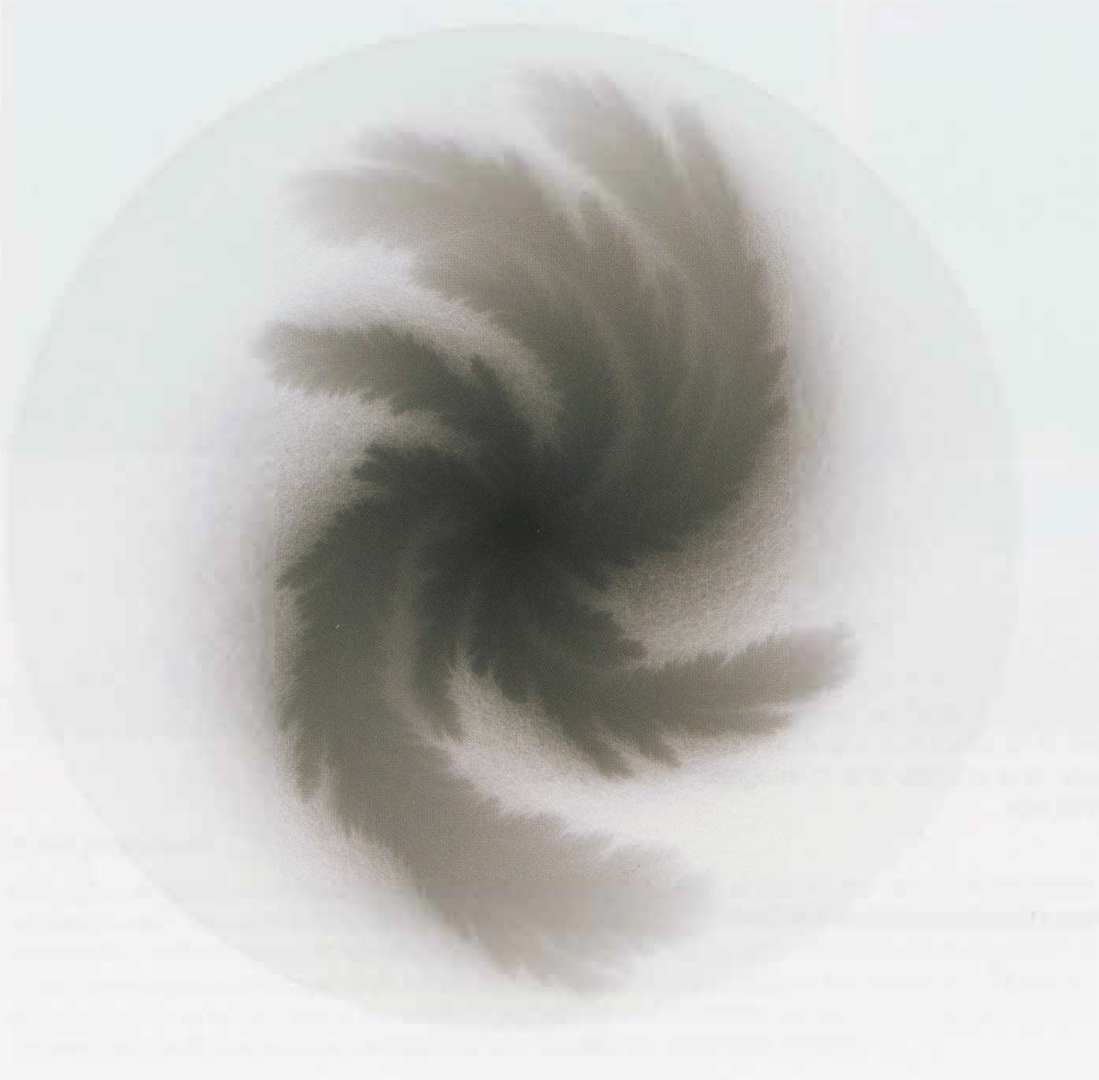Andy Lomas: Flow 9
Artist(s):
Title:
- Flow 9
Exhibition:
Creation Year:
- 2007
Medium:
- Algorithmic image
Size:
- 24 inches x 24 inches x 1 inch
Category:
Artist Statement:
These images are composed of layered trajectories followed by millions of particles as they flow in fields of forces. Each individual trajectory is essentially an independent, random process, with the trail terminating when it reaches a deposition. Collectively, however, the paths combine to form delicate complex shapes of filigree and shadow in the areas of negative space that the paths don’t reach. At first glance, there appear to be definite shapes and forms outlined in the final images, but closer inspection reveals this effect to be ephemeral. Over time, as particles deposit they create a growing region that future particles will not be able to enter. Subtle shadow-like structures form in the areas that trails no longer reach, reflecting the growth of the termination zone. There are no actual defined boundaries, simply intricately structured gradients of tone formed by the end points of trajectories. These images can be seen as the natural duals of the Aggregation images exhibited at previous
SIGGRAPH conferences. Whereas the images from the Aggregation series directly show the deposited structures themselves, these images illustrate the other side of the same processes: the paths followed by particles before they deposit.
Technical Information:
The base algorithms used to generate the forms are variations on diffusion-limited aggregation. Different structures are produced by introducing small biases and changes to the rules for particle motion and deposition. The growth-like nature of the process, repeatedly aggregating on top of the currently deposited system, produces reinforcement of deviations caused by small forces applied to the undeposited particles as they randomly move. This means that small biases to the rules and conditions for growth can produce great changes in the finally created form. All the software used to simulate the structures and render the final images was written by the artist in Visual C++.





